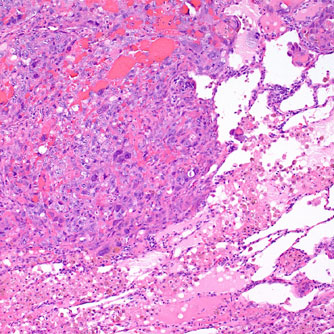Seemingly healthy cells may hide clues that lung cancer will later develop, according to researchers at The University of Texas MD Anderson Cancer Center (Texas, USA). Previous research by the same team has revealed that normal-appearing tissue close to lung premalignant and cancer lesions may have tumor-associated molecular abnormalities. This discovery reflects the phenomenon known as field cancerization (FC), where large areas of cells are affected by a cancer-causing event, such as smoking. In their present study, Humam Kadara and colleagues included 20 patients with stages I to III non-small cell lung cancer (NSCLC), including five non-smokers and 15 smokers. Various genetic testing methods were used to examine lung tumors, uninvolved lung tissue and normal-appearing airways located varying distances from the tumors. Researchers identified 1,661 differentially expressed gene features between tumors and airways compared with normal lung tissue. A subset of these changes was much more prevalent in lung-cancer patients than cancer-free smokers. In addition, 422 genes, and key cancer-associated signaling pathways, were progressively expressed in airways, with a more intense presence closer to the tumor and tapering at further distances. This gradient site-dependent effect is consistent with NSCLC expression patterns. Furthermore, higher levels of LAPTM4B, a gene that has been found in liver, lung, breast, ovarian and gastric cancers, were found in airways closer to tumors. It also aids in autophagy, a self-cannibalization mechanism that helps cells survive. LAPTM4B overexpression can cause resistance to certain types of chemotherapy. Reporting that: “The adjacent airway [field cancerization] comprises both site-independent profiles as well as gradient and localized airway expression patterns,” the study authors submit that: “Profiling of the airway [field cancerization]may provide new insights into NSCLC oncogenesis and molecular tools for detection of the disease.”
Do Healthy Cells Hide Cancer?
Humam Kadara, Junya Fujimoto, Suk-Young Yoo, Yuho Maki, Adam C. Gower, Ignacio I. Wistuba, et al. “Transcriptomic Architecture of the Adjacent Airway Field Cancerization in Non–Small Cell Lung Cancer.” J Natl Cancer Inst., February 22, 2014.
RELATED ARTICLES




